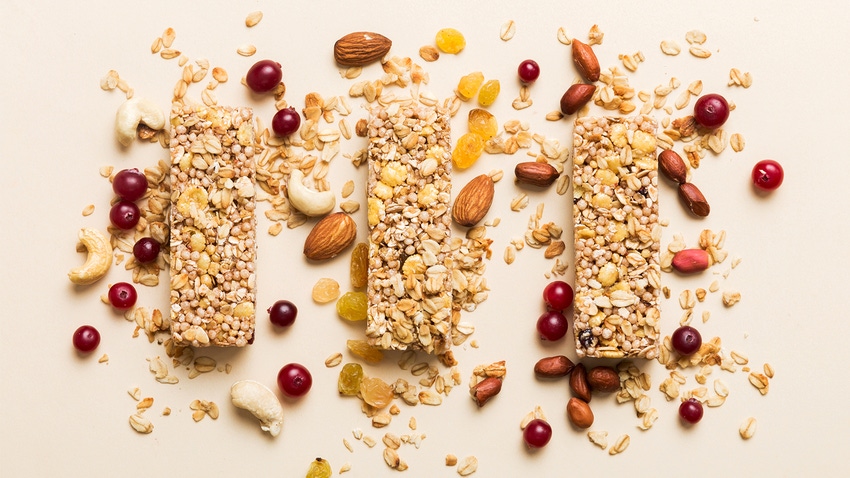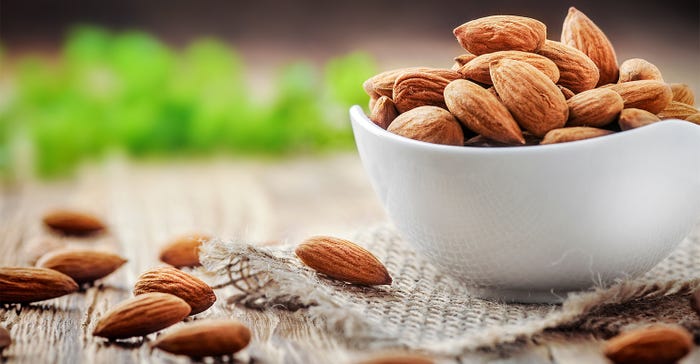Tastewise partners with Almond Board of California to uncover snacking trends
The Almond Board of California uses AI with the help of Tastewise’s technology to analyze snacking trends among Gen Z and Millennials, focusing on “intentional indulgence” that combines health, sustainability and social connection.

At a Glance
- The Almond Board of California (ABC) joined forces with Tastewise AI to discover snacking trends.
- ABC launches competition for food scientists and students to submit almond product concepts inspired by the AI trends data.
- The data focuses on health, eco-consciousness and social connectivity in snacking.
Earlier this year, the Almond Board of California (ABC) partnered with Tastewise to analyze vast data sets and identify emerging snacking trends using artificial intelligence (AI). The goal is to drive innovation in the food industry, focusing on how AI can aid business operations and predict trends before they’re even established.
AI helps students cook up “intentional indulgence”
There’s a lot of gold to mine in Tastewise’s data, and when ABC examined the trends around how Gen Z and Millennial consumers approach snacking, it detected a novel pattern. “We saw that these consumers are finding different ways to be intentional about choosing snacks they feel good about,” Charice Grace, manager of trade marketing and stewardship for ABC, said.
Dubbing this enlightened outlook “intentional indulgence,” ABC made it the inspiration for its “Tastemaker Trials,” a company-hosted competition that invites a national cohort of food science and culinary education students to submit almond product concepts — informed by Tastewise’s AI trends data — that embody “intentional indulgence.”
Grace outlined three paths or “trends” consumers are already taking toward snacking with “intentional indulgence,” as well as how almonds help get them there.

Sharpening the lens on health
“Trend No. 1 is about sharpening the lens on health,” she explained. “We’re seeing through Tastewise that Gen Z and Millennials are moving away from ‘healthy’ as a general claim to zoom in on specific, personalized interests like fitness, weight management, energy, gut health, blood sugar and stress relief.”
How do almonds aid this trend? “The current body of almond nutrition research totals more than 175 peer-reviewed publications on subjects such as heart health, weight management, diabetes and blood sugar regulation and more,” Grace said. “So, we see continued personalization as an opportunity for almond ingredients to lend their healthy halo.”
Eco-conscious eating
The second trend is “about moving toward eco-conscious eating,” per Grace. “According to Tastewise, top claims among Gen Z and Millennials include ‘natural,’ ‘organic,’ ‘local produce,’ ‘sustainability’ and ‘food waste,’ she said. “‘Vegan’ is also a prominent dietary claim as younger generations cite environmental and personal health reasons for going plant-based.”
What can almonds do to help? “Almonds are a natural, plant-based food, and farmers work toward continuous improvement of sustainability practices,” Grace explained. “California almond farmers have reduced the amount of water used to grow almonds by 33% since the 1990s and use a zero-waste approach to almond coproducts.”
Connecting through consumption
The third trend number, according to Grace, is “about younger consumers finding connectivity through consumption.” She said they “view food as a form of self-expression and are embracing smaller treats to meet personal needs and values.”
“Through Tastewise, we’ve found that ‘travel’ and ‘friends’ are the top two social-setting claims for snacks among Gen Z and Millennials,” she explained. “Snacks are also a more accessible way for younger consumers to enjoy affordable moments of indulgence compared to larger purchases.”
Where do almonds lend assistance for this trend? “Almonds come in more than 14 versatile forms that can serve as a canvas for creativity when experimenting with product flavors, cuisines and formats,” Grace said.
About the Author(s)
You May Also Like






